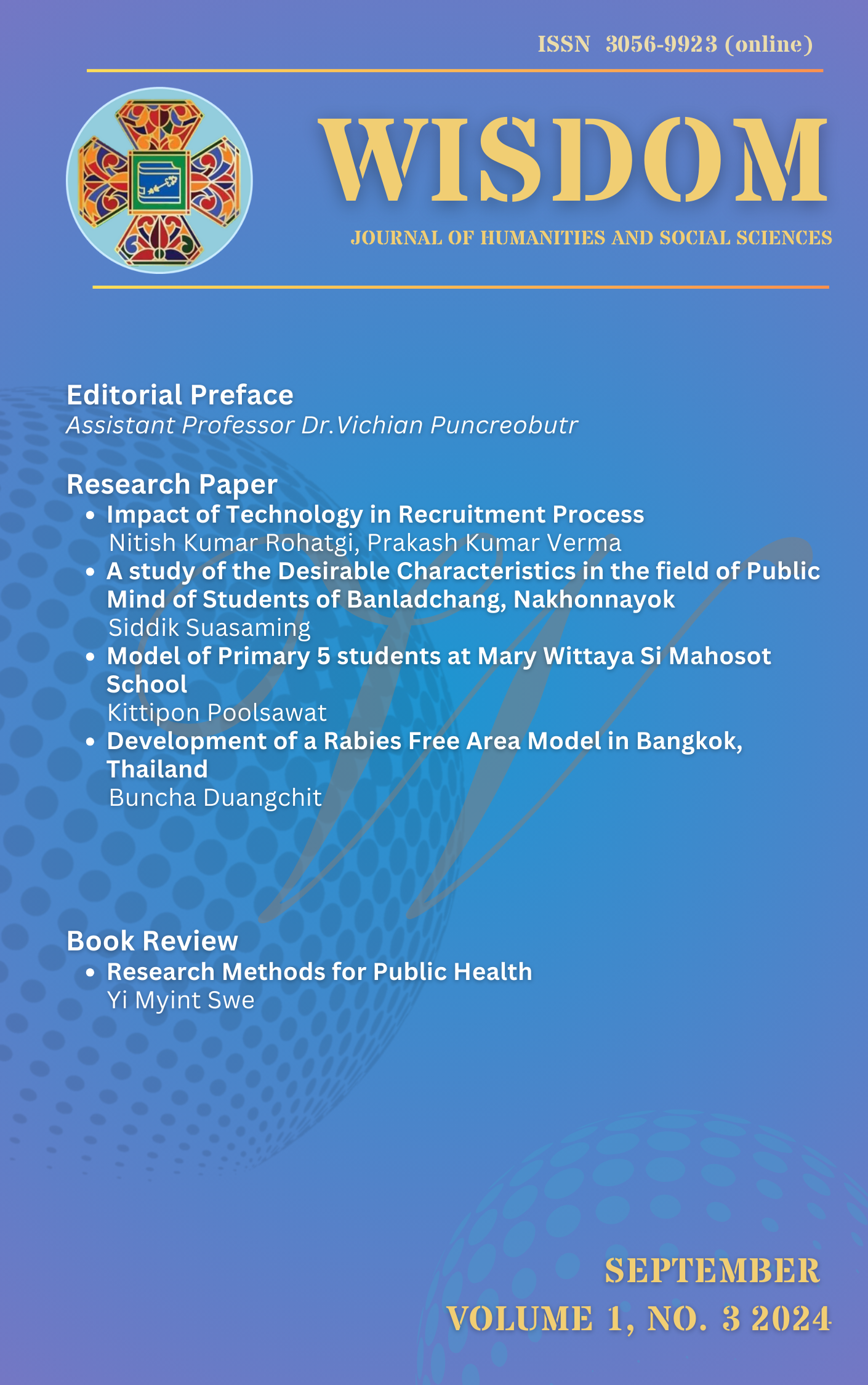Development of a Rabies Free Area Model in Bangkok, Thailand
Keywords:
Rabies control, Rabies Free Area, Rabies Free Area Model in BangkokAbstract
Abstract
This study aimed to study the behavior of people controlling dogs and rabies, the problems caused by the announcement of temporary rabies outbreak areas, and the development of a model for creating rabies-free areas locally in Bangkok. The study conducted in-depth interviews with 78 dog owners, stray dog caretakers, stray dog population controllers, people who were bitten by dogs, and people involved in creating rabies-free areas at the local level in Bangkok. There were 46 key informants. The results of the study found that 1) people’s behavior of controlling the number of dogs depended on their dog-rearing behavior, responsibility for bringing dogs to raise, and behavior of feeding dogs in public areas. People’s behavior in controlling rabies depended on their behavior of vaccinating dogs, providing information when bitten by dogs, vaccine shortages, and civil society participation. 2) The problem arising from the declaration of a temporary rabies outbreak area is the problem of using measures to control the keeping of dogs. Allowing unvaccinated dogs into the area Controlling newborn dogs Reducing areas at risk of being bitten by stray dogs and panic over the spread of disease 3) Developing a model for creating rabies-free areas at the local level in Bangkok.
References
ภาษาไทย
กรมควบคุมโรค. (2554). คู่มือโรคพิษสุนัขบ้าและลดความเสี่ยงจากการถูกสุนัขกัด. กรุงเทพฯ: สำนักโรคติดต่อทั่วไป.
กรมปศุสัตว์. (2018). การเสียชีวิตของผู้ป่วยจากโรคพิษสุนัขบ้า. เดลินิวส์. 27 กุมภาพันธ์ 2018.
กรมปศุสัตว์. (2018). โรคพิษสุนัขบ้าระบาดหนัก ประกาศเขตโรคระบาด. 13 จังหวัด. เดลินิวส์. 1 มีนาคม 2018.
สำนักควบคุม ป้องกันและบำบัดโรค กรมปศุสัตว์. (2558). คู่มือการสร้างพื้นที่ปลอดโรคพิษสุนัขบ้า ระดับพื้นที่. กรุงเทพฯ: โรงพิมพ์ชุมนุมสหกรณ์การเกษตรแห่งประเทศไทย.
English
Bureau of Control, Prevention, and Treatment of Animal Diseases, Department of Livestock Development. (2015). Manual for establishing rabies-free zones at the local level. Bangkok: Cooperative Federation of Thailand Printing House
Department of Disease Control. (2011). Rabies manual and risk reduction from dog bites. Bangkok: General Communicable Diseases Division.
Department of Livestock Development. (2018, February 27). Patient deaths from rabies. Daily News.
Department of Livestock Development. (2018, March 1). Severe rabies outbreak: Epidemic declared in 13 provinces. Daily News.





